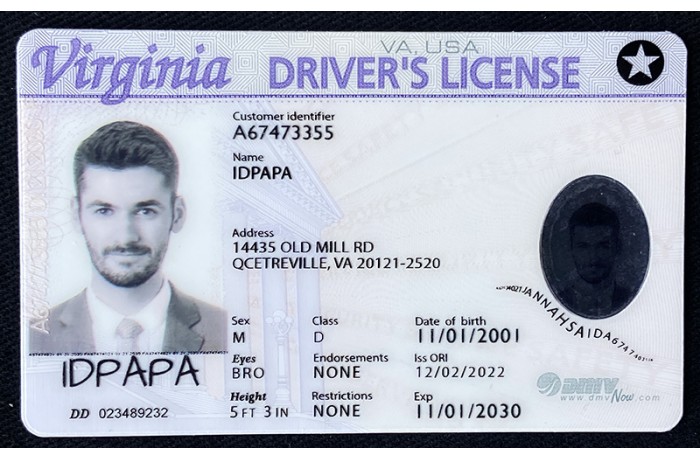In today's digital age, our identities are increasingly displayed online. This widespread digital footprint can make us vulnerable to Ethical concerns in surveillance identity theft and fraud. Fortunately, there are several steps you can take to safeguard your online persona and minimize the risk of becoming a victim.
One crucial step is to create strong, unique passwords for all your profiles. Avoid using easily guessed passwords or repeating the same password across multiple platforms. Instead, employ a combination of symbols and numbers, and consider using a encryption software to help you generate complex passwords that are easy to remember.
- Regularly monitor your bank accounts and credit card statements for any suspicious transactions.
- Exercise caution when sharing personal data online, especially on social media platforms. Avoid posting private data like your full name, address, or birth date publicly.
- Utilize multi-factor authentication whenever possible to add an extra layer of security to your accounts. This requires you to enter a passphrase from your phone or email in addition to your password.
By following these simple strategies, you can significantly decrease the risk of becoming a victim of identity theft and protect your digital persona. Stay educated about the latest online threats and best practices to ensure your well-being in the virtual world.
Trekking the Labyrinth: Comprehending copyright Laws and Their Implications
In the labyrinthine world of legal ramifications, fake identification presents a particularly complex challenge. Laws surrounding copyright IDs vary significantly from jurisdiction to jurisdiction, making it crucial for individuals to familiarize themselves with the specific restrictions in their area. A seemingly innocuous act of producing a false ID can result in severe consequences, including financial sanctions and even imprisonment.
- Additionally, the implications of copyright use extend beyond legal consequences. Possessing or employing a copyright ID can damage an individual's credibility and hinder their future opportunities.
- Therefore, it is imperative for individuals to demonstrate caution and conform with all applicable laws and regulations. Understanding the gravity of copyright offenses can help minimize the risk of undesirable consequences.
Biometric Authentication: The Next Frontier in Security
As technology advances, so too do the methods employed by malicious actors to compromise our digital protection. Traditional passwords, once considered robust, are increasingly susceptible to hacks. This presents a pressing need for more secure authentication methods. Biometric security emerges as a compelling solution, offering a level of verification that transcends the limitations of standard passwords.
Biometrics leverage our unique physical traits for authentication. Fingerprint scanning, facial recognition, and iris detection are just a few examples. These technologies offer several advantages over passwords, including enhanced reliability, reduced risk of impersonation, and increased user simplicity.
While biometric security presents a promising future, it's essential to address concerns surrounding privacy and records protection. Robust regulations and ethical guidelines are crucial to ensure responsible implementation. As we move towards a more interdependent world, embracing biometrics can pave the way for a more secure and reliable digital experience.
Digital ID Systems : Building Trust in the Digital Age
In today's increasingly interconnected world, establishing trust is paramount crucial. As we engage in more and more online transactions and interactions, ensuring the genuineness of individuals becomes fundamental. Identity verification technology plays a pivotal role in bridging this trust gap.
Through advanced algorithms, these solutions can confirm user identities with high accuracy, mitigating the risks associated with identity theft. This not only safeguards sensitive information but also fosters a more secure and confident digital environment.
From online banking and e-commerce to social media platforms and government services, identity verification is becoming an indispensable system for building trust and protecting our digital identities.
Combatting Identity Theft: Leveraging Advanced Verification Solutions
In today's digital landscape, identity theft poses a significant threat to individuals and organizations alike. To combat this growing menace, cutting-edge verification solutions are becoming increasingly crucial. These innovative technologies leverage multi-factor authentication to validate user identities with heightened accuracy and security. By implementing such robust verification measures, businesses can significantly mitigate the risk of identity theft, protect sensitive data, and build trust with their customers.
- One key advantage of advanced verification solutions is their ability to provide a user-friendly experience for legitimate users while effectively deterring fraudsters.
- By integrating these technologies into existing systems, organizations can strengthen their overall security posture and reduce the potential damage caused by identity theft incidents.
As technology continues to evolve, so too will the methods used by criminals to perpetrate identity theft. Therefore, it is essential for businesses to keep at the forefront of security innovation and adopt cutting-edge verification solutions to safeguard their assets and reputation.
Protecting Your Privacy: Staying Ahead in front ID Fraudsters
In today's increasingly digital world, safeguarding your personal information is more crucial than ever. Identity fraudsters are becoming increasingly cunning in their tactics, making it essential to stay one step ahead.
- Implement strong passwords and multi-factor authentication to protect your accounts.
- Be cautious concerning sharing sensitive data online or over the phone.
- Scrutinize your financial statements regularly for any suspicious activity.
- Shred documents containing personal information before discarding them.
- Consider placing a fraud alert on your credit report to reduce access to your information.

Comments on “Securing Your Digital Footprint: A Step-by-Step Guide to ID Fraud Prevention”